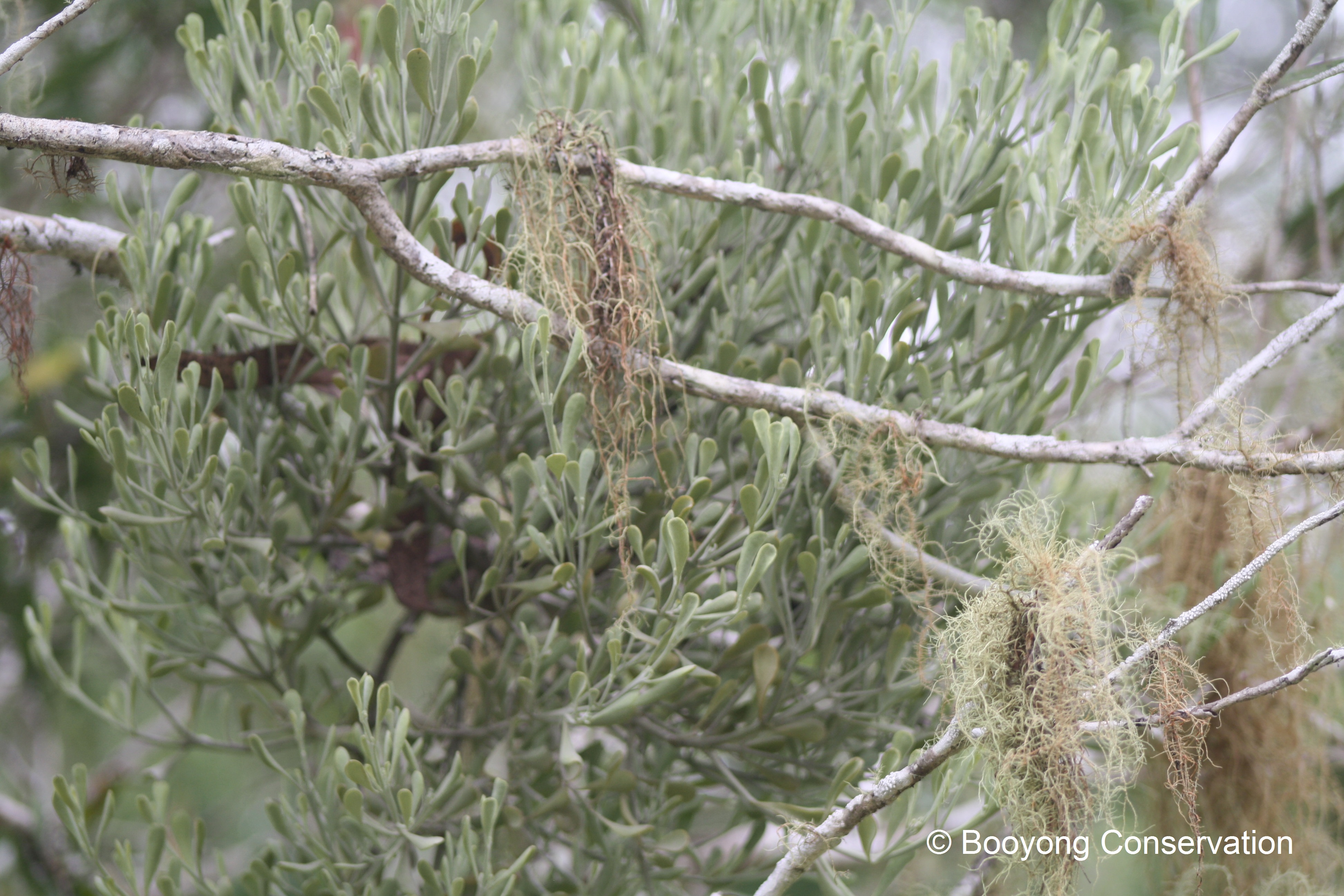Common Name: Mistletoe
Scientific Name: Amyema species
This plant has always intrigued me, it is quite predominant on the paper bark trees at Booyong and I am yet to see it in the Conservation area. Bob our Gatekeeper alerted me to the fact that it is a mistletoe and parasite which attaches itself to the host plant. We are so grateful for the knowledge he brings!
 The moisture of the paperbark tree seems to be particularly attractive to this plant and they commonly attach themselves to eucalypts, wattles and casuarinas. The host tree is generally not killed by mistletoe, however in large numbers they can reduce the health of the tree and increase the effect of drought. The leaves generally resemble the host plant to protect them from being eaten by possums.
The moisture of the paperbark tree seems to be particularly attractive to this plant and they commonly attach themselves to eucalypts, wattles and casuarinas. The host tree is generally not killed by mistletoe, however in large numbers they can reduce the health of the tree and increase the effect of drought. The leaves generally resemble the host plant to protect them from being eaten by possums.
The plant is sensitive to fire and is found throughout Australia, with Tasmania being exempt. The black, red and white mistletoe bird passes a gluey seed which fastens to the branch and takes hold. Within days the plant emerges from the seed, taking water and nutrients from its host.
It has been questioned wether the mistletoe is a weed or wonder . The mistletoe contributes to the wildlife habitat, native birds like honeyeaters, shrikes, woodswallows, bowerbirds, cokatoos, ravens and mistletoe birds feed on fruits and disperse seeds and butterflies, insects, possums and gliders feed on foliage, flowers and fruit. They flower in spring and summer with clusters of pink, red or yellow green to attract nectar loving birds and have berries of fruit that redden when ripe.
Mistletoes can be removed from individual trees to save them short term, however due to the limited number at Booyong we’re best to observe what happens naturally and let nature take its course. The Common Brushtail Possum also helps manage the mistletoe as it is part of their diet.
